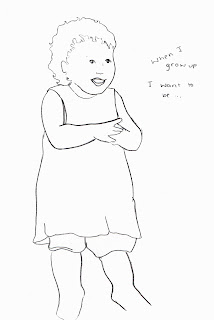These are some ideas for character designs I had started during my authorship project last year. I really like the technique I used of collaging and then adding details digitally, so this is a technique I would definitely try out again.
I decided to make my character female, although I didn't want to make her overly "girly" as I wanted to aim my book at both boys and girls. I also didn't want to stereotype girls as all being princess-y and dressed all in pink, as I think that most young girls aren't really like that, and there is already a huge amount of books on the market that already cater to this. I also think that this gives out a more positive message to children, as I think there is already a huge pressure on young girls to be interested in things that are typically girly and pink - like barbie, ponies, princesses and fairies - while boys are encouraged to like football, robots and dinosaurs. I think that children should be allowed and encouraged to pursue their own interests regardless of the traditional gender roles, and I want my book to reflect this.
I decided to dress her in dungarees, as it is a quite neutral form of clothing, but made them slightly feminine from the pattern I used. I also made her coat for the outside scenes purple, as this helps show that she is a girl without being pink.
Whilst starting to design my character I also wanted to think about if and how fancy dress might be incorporated into my book, so I decided to draw her in different outfits
Although I liked the idea of fancy dress, I wanted to keep consistency throughout my book to make it clear to young children that it was the same character throughout the story, and so I chose an outfit for indoors and an outfit for outdoors






a.jpg)
a.jpg)




a.jpg)
b.jpg)





